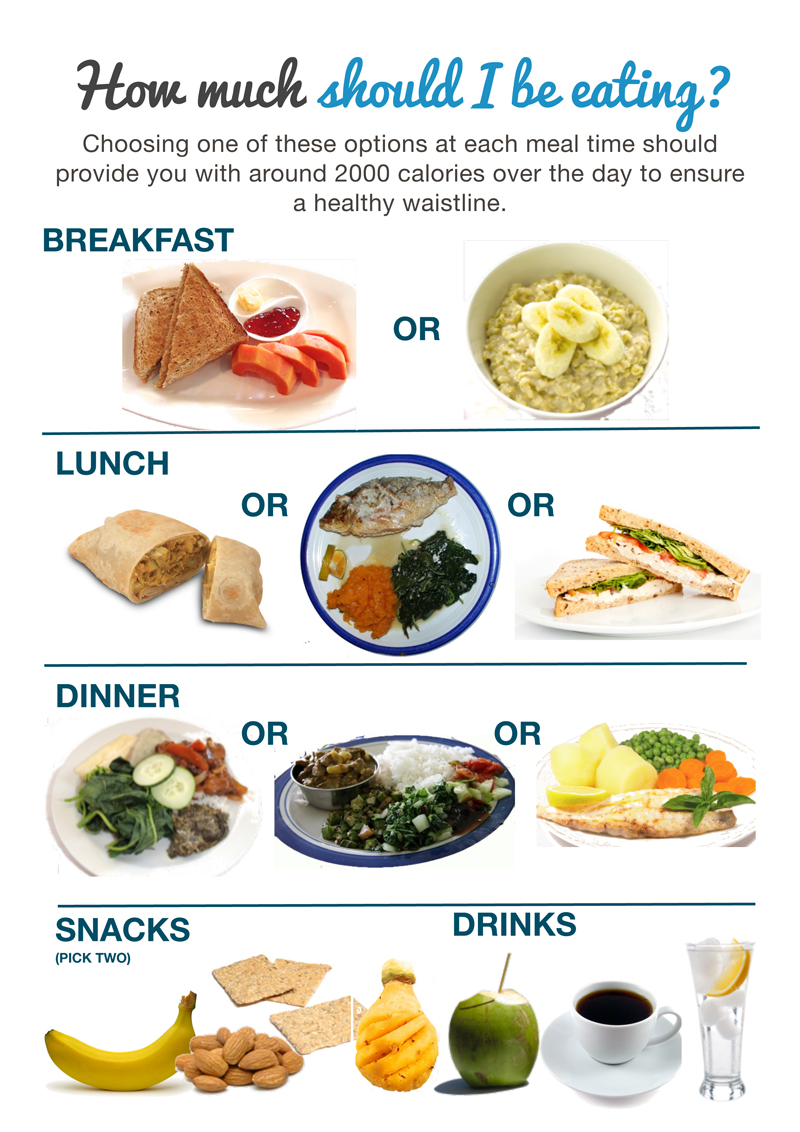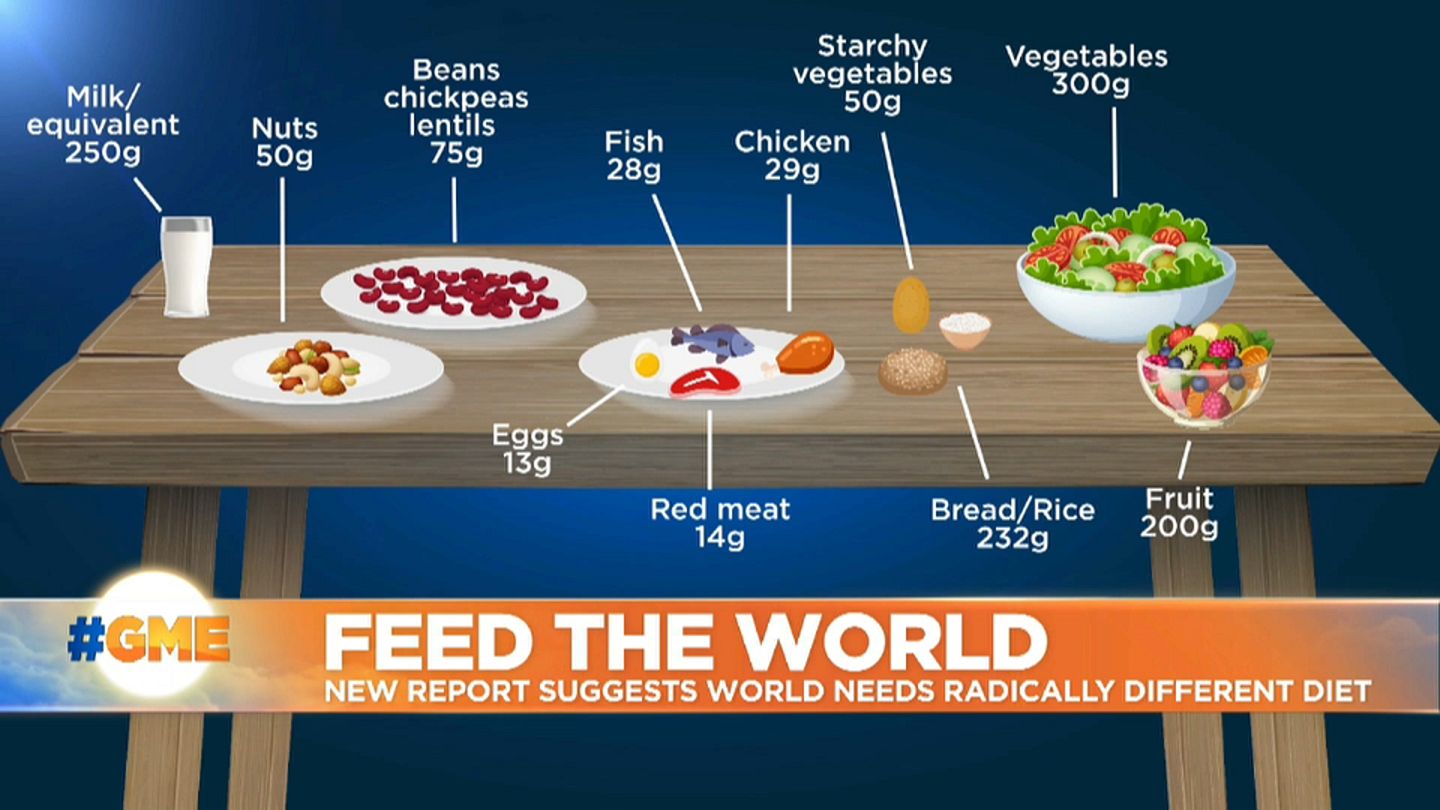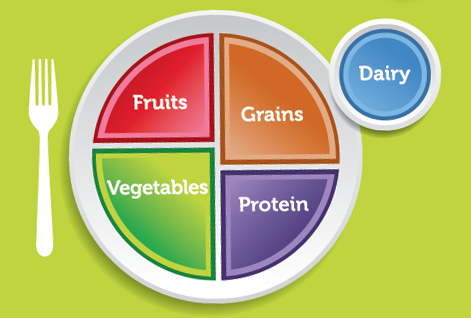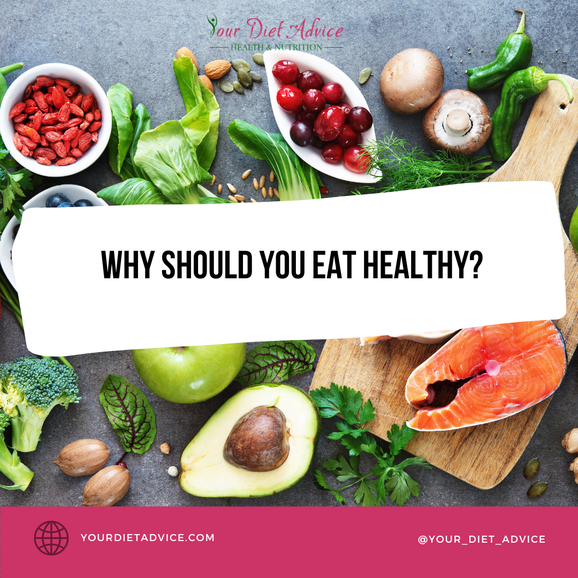What You Need to Eat to Be Healthy? To be healthy, eat a balanced diet with fruits, vegetables, lean proteins, and whole grains. Avoid processed foods and sugar.
Eating healthy is essential for overall well-being. Consuming a variety of fruits and vegetables provides essential vitamins and minerals. Lean proteins, such as chicken, fish, and legumes, support muscle growth and repair. Whole grains, like brown rice and quinoa, offer sustained energy and fiber.
Limiting processed foods, sugary drinks, and excessive fats can prevent chronic diseases. Hydration is also key, so drink plenty of water throughout the day. Healthy eating habits contribute to better energy levels, improved mood, and a stronger immune system. Prioritizing nutritious foods can lead to a longer, healthier life.
Introduction To A Healthy Diet
What You Need to Eat to Be Healthy? Eating healthy is essential for a long and happy life. A good diet keeps your body strong and your mind sharp. It helps you feel better and have more energy. Understanding what to eat is the first step to a healthier lifestyle.
The Importance Of Balanced Nutrition
Balanced nutrition means eating the right amount of different foods. Your body needs a mix of proteins, carbohydrates, fats, vitamins, and minerals. Each type of food plays a role in keeping you healthy.
- Proteins: Build and repair tissues.
- Carbohydrates: Provide energy for your daily activities.
- Fats: Support cell growth and protect organs.
- Vitamins: Help your body work properly.
- Minerals: Keep your bones strong and your heart healthy.
Misconceptions About Healthy Eating
Many people think eating healthy means giving up tasty food. This is not true. You can enjoy your meals and stay healthy at the same time. Here are some common misconceptions:
- Healthy food is boring: There are many delicious healthy recipes.
- You need to eat less: Eating the right amount is more important.
- Carbs are bad: Your body needs carbs for energy.
To help you understand better, here is a table showing examples of healthy foods:
| Food Type | Examples |
|---|---|
| Proteins | Chicken, beans, tofu |
| Carbohydrates | Whole grains, fruits, vegetables |
| Fats | Avocados, nuts, olive oil |
| Vitamins | Fruits, vegetables, dairy |
| Minerals | Leafy greens, nuts, seeds |
Defining Superfoods
Many people talk about superfoods. But what are they really? Superfoods are nutrient-rich foods. They offer high levels of vitamins and minerals. Including them in your diet can boost your health.
What Makes A Food ‘super’
Not all healthy foods are superfoods. A food is super because of its high nutrient content. These foods are packed with antioxidants. They also have healthy fats and fiber.
Some common examples of superfoods include:
- Blueberries: Rich in vitamins and antioxidants.
- Salmon: High in omega-3 fatty acids.
- Kale: Packed with vitamins A, C, and K.
Superfoods help in reducing the risk of chronic diseases. They can also improve your overall well-being. But remember, no single food can provide all the nutrients you need.
Common Myths About Superfoods
Many myths surround superfoods. Let’s debunk some common misconceptions:
- Myth: Superfoods can replace a healthy diet.
- Fact: They should complement a balanced diet, not replace it.
- Myth: More superfoods mean better health.
- Fact: Balance and variety in your diet are key.
- Myth: Only expensive foods are superfoods.
- Fact: Affordable foods like beans and spinach can also be superfoods.
It’s important to understand that superfoods are not magic pills. They work best as part of a balanced diet. Always aim for a variety of foods to meet your nutritional needs.
Fruits And Berries: Nature’s Candy
What You Need to Eat to Be Healthy? Fruits and berries are like nature’s candy. They are sweet, delicious, and packed with nutrients. These natural treats are essential for a healthy diet. They can help prevent many diseases and keep you feeling your best.
Blueberries: Antioxidant Powerhouses
Blueberries are tiny but mighty. They are full of antioxidants. These compounds help protect your body from harmful free radicals. Eating blueberries can boost your immune system.
Blueberries are also rich in vitamins and fiber. They can help improve brain function and memory. They are low in calories, making them a great snack.
| Nutrient | Amount per 100g |
|---|---|
| Vitamin C | 9.7 mg |
| Fiber | 2.4 g |
| Antioxidants | High |
Avocados: Full Of Healthy Fats
Avocados are creamy and delicious. They are full of healthy fats. These fats are good for your heart and can lower bad cholesterol levels.
Avocados are also rich in vitamins and minerals. They contain potassium, which helps control blood pressure. They are a great addition to any meal.
- Healthy fats
- Vitamins
- Potassium
Adding avocados to your diet can help you feel fuller longer. They are versatile and can be used in many dishes.
Vegetables That Pack A Punch
Eating vegetables is essential for maintaining a healthy body. Some vegetables are more nutritious than others. Let’s explore two vegetables that pack a punch.
Kale: More Than Just A Trend
Kale is a leafy green vegetable that is packed with nutrients. It is rich in vitamins A, C, and K. These vitamins help keep your eyes, skin, and bones healthy. Kale also has a lot of fiber, which helps with digestion.
Here are some benefits of eating kale:
- Boosts your immune system
- Helps reduce inflammation
- Aids in detoxifying your body
Eating kale is easy. You can add it to salads, smoothies, or soups. This versatile vegetable can be a great addition to any meal.
Garlic: Small But Mighty
Garlic might be small, but it has powerful health benefits. This vegetable is rich in antioxidants that help protect your cells from damage. Garlic can also help lower blood pressure and cholesterol levels.
Here are some benefits of eating garlic:
- Boosts heart health
- Improves immune function
- Has anti-inflammatory properties
Adding garlic to your diet is simple. You can use it in cooking to flavor your meals. Garlic can be added to sauces, soups, and stir-fries.
Incorporate these vegetables into your diet to enjoy their health benefits. They are easy to prepare and delicious to eat. Make them a part of your daily meals for a healthier you.
Proteins That Provide More
What You Need to Eat to Be Healthy? Eating the right proteins is key to staying healthy. Proteins build and repair tissues. They are also essential for producing enzymes and hormones. Not all proteins are created equal. Some provide extra benefits beyond basic nutrition. Let’s explore two such powerhouses.
Salmon: Omega-3 Rich
Salmon is a fantastic source of high-quality protein. It is rich in omega-3 fatty acids, which are essential for heart health. These fatty acids reduce inflammation and improve brain function. A 100-gram serving of salmon provides about 20 grams of protein. It also supplies a variety of vitamins and minerals.
| Component | Amount per 100g |
|---|---|
| Protein | 20g |
| Omega-3 Fatty Acids | 1.5g |
| Vitamin D | 360 IU |
Salmon is also very versatile. You can bake, grill, or poach it. Including salmon in your diet can boost overall health.
Lentils: Plant-based Protein Heroes
Lentils are an excellent source of plant-based protein. They are rich in fiber and help with digestion. One cup of cooked lentils offers about 18 grams of protein. They are also packed with iron, folate, and magnesium.
- Protein: 18g per cup
- Fiber: 15g per cup
- Iron: 37% of daily needs per cup
Lentils are not only nutritious but also budget-friendly. They are easy to cook and can be added to soups, salads, and stews. Eating lentils regularly can improve heart health and support weight management.
Incorporate these protein-rich foods into your diet. Your body will thank you!

Credit: www.health.gov.fj
Grains And Nuts For Energy
What You Need to Eat to Be Healthy? Eating the right foods can boost your energy levels. Grains and nuts are excellent sources of energy. They provide essential nutrients and keep you full longer. Discover how quinoa and almonds can power your day.
Quinoa: A Complete Protein
Quinoa is a superfood. It contains all nine essential amino acids. This makes it a complete protein. Quinoa is also rich in fiber, iron, and magnesium. These nutrients help your body stay strong and energetic.
| Nutrient | Benefit |
|---|---|
| Protein | Builds and repairs tissues |
| Fiber | Aids digestion |
| Iron | Boosts energy |
| Magnesium | Supports muscle function |
Almonds: Nutrient-dense Snacks
Almonds are a great snack choice. They are packed with healthy fats, protein, and vitamins. Eating almonds can help keep your energy steady. They are also rich in vitamin E and antioxidants.
- Boosts brain power
- Supports heart health
- Helps control blood sugar
Beverages For Better Health
Choosing the right beverages is crucial for maintaining good health. Drinks can provide essential nutrients, aid in digestion, and keep you hydrated. Below are two excellent beverage choices to help you stay healthy.
Green Tea: Loaded With Antioxidants
Green tea is a powerful drink packed with antioxidants. These antioxidants help combat free radicals in the body, reducing cell damage. Drinking green tea regularly can improve brain function, aid fat loss, and lower the risk of cancer.
Here are some benefits of green tea:
- Boosts metabolism
- Improves brain function
- Reduces risk of heart disease
- May lower the risk of some cancers
Water: The Ultimate Superfood
Water is essential for life and is often called the ultimate superfood. It helps in transporting nutrients and oxygen to cells, aids digestion, and regulates body temperature. Staying hydrated improves skin health, boosts energy levels, and supports overall well-being.
Here are some key points about water:
| Benefit | Explanation |
|---|---|
| Hydration | Keeps your body functioning properly. |
| Detoxification | Helps remove waste from the body. |
| Temperature Regulation | Maintains body temperature. |
| Skin Health | Improves skin hydration and elasticity. |
Make sure to drink at least eight glasses of water daily. This simple habit can significantly impact your overall health.

Credit: www.euronews.com
Incorporating Superfoods Into Your Diet
What You Need to Eat to Be Healthy? Superfoods are nutrient-rich foods that offer many health benefits. They can boost your immune system and energy levels. Incorporating these foods into your diet is simple and rewarding.
Simple Recipe Ideas
Here are some easy ways to add superfoods to your meals:
- Breakfast Smoothie: Blend spinach, kale, banana, and chia seeds.
- Quinoa Salad: Mix cooked quinoa with avocados, cherry tomatoes, and black beans.
- Oatmeal Toppings: Add blueberries, almonds, and a drizzle of honey.
Making Healthy Eating A Lifestyle
To make healthy eating a part of your life, follow these tips:
- Plan your meals in advance.
- Keep a variety of superfoods at home.
- Experiment with new recipes and ingredients.
Eating healthy should be enjoyable and sustainable. Make small changes to your diet gradually. Over time, these changes will become habits.
Challenges And Considerations
Eating healthy can be challenging. There are many factors to consider. You need to navigate dietary restrictions and stay within a budget. Understanding these challenges can help you make better choices.
Navigating Dietary Restrictions
Dietary restrictions can make healthy eating tough. Some people have allergies. Others need to avoid certain foods for health reasons.
- Gluten-free: Avoid wheat, barley, and rye.
- Dairy-free: Skip milk, cheese, and yogurt.
- Nut-free: Stay away from peanuts and tree nuts.
Finding alternatives is key. For gluten-free diets, try rice or quinoa. For dairy-free, use almond or soy milk. Nut-free diets can include seeds like sunflower or pumpkin.
Budget-friendly Tips For Healthy Eating
Eating healthy doesn’t have to be expensive. There are ways to save money and eat well.
| Tip | Details |
|---|---|
| Buy in bulk | Purchase whole grains, beans, and nuts in larger quantities. |
| Shop seasonally | Seasonal fruits and veggies are often cheaper and fresher. |
| Plan meals | Planning helps avoid impulse buys and food waste. |
Here are some quick tips:
- Make a grocery list before shopping.
- Use coupons and look for sales.
- Cook at home instead of eating out.
Following these tips can help you eat healthy on a budget.

Credit: extension.uga.edu
Conclusion: A Balanced Approach
Achieving a healthy diet requires a balanced approach. It’s not just about eating specific foods but understanding how various nutrients work together. A balanced diet helps you maintain energy levels, support mental well-being, and promote overall health.
The Role Of Superfoods In Overall Health
Superfoods are nutrient-rich foods considered beneficial for health. They contain high levels of vitamins, minerals, and antioxidants. Common superfoods include:
- Blueberries: Rich in antioxidants and vitamins.
- Kale: Packed with fiber, vitamins, and minerals.
- Salmon: High in omega-3 fatty acids.
- Quinoa: A complete protein source with all nine essential amino acids.
- Chia Seeds: Loaded with fiber, protein, and omega-3 fatty acids.
Including these foods in your diet can enhance your nutrient intake. They provide essential elements that support various bodily functions. But remember, superfoods should complement a balanced diet, not replace it.
Listening To Your Body
Paying attention to your body’s signals is crucial for maintaining health. Your body often tells you what it needs. If you feel tired, you might need more iron or vitamin B12. If you have frequent colds, you might need more vitamin C or zinc.
Here are some tips to listen to your body:
- Eat slowly and mindfully. This helps you notice when you’re full.
- Keep a food diary. Track what you eat and how you feel.
- Notice cravings. They can indicate nutrient deficiencies.
- Stay hydrated. Sometimes thirst is mistaken for hunger.
Listening to your body helps you make better food choices. It allows you to tailor your diet to meet your specific needs. This personalized approach contributes to long-term health and well-being.
Maintaining a balanced diet involves more than just eating specific foods. It requires understanding your body’s needs and making informed choices. Incorporate a variety of nutrients and pay attention to how your body responds. This will help you achieve and maintain good health.
Frequently Asked Questions
What Should You Eat To Get Healthy?
Eat a variety of fruits, vegetables, lean proteins, whole grains, and healthy fats. Drink plenty of water. Avoid processed foods and sugary drinks.
What Do I Need To Eat In A Day To Be Healthy?
Eat a balanced diet with fruits, vegetables, whole grains, lean proteins, and healthy fats. Drink plenty of water. Limit sugar, salt, and processed foods.
What Is The #1 Healthiest Food?
The #1 healthiest food is often considered to be leafy greens like spinach. They’re packed with vitamins, minerals, and antioxidants.
How Do I Start Eating Healthy?
Start eating healthy by choosing whole foods like fruits, vegetables, and lean proteins. Avoid processed foods and sugary drinks. Drink plenty of water. Plan balanced meals and snacks. Practice portion control.
Conclusion
Eating a balanced diet is essential for a healthy life. Prioritize fresh fruits, vegetables, lean proteins, and whole grains. Avoid processed foods and sugary drinks. Stay hydrated and practice portion control. Making these simple dietary changes can significantly improve your overall health and well-being.
Start today for a healthier tomorrow.




Leave a Reply